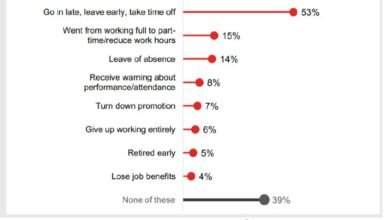
By | Editor
My Journey Through Quality Standards in Different Worlds
Its been about 8 years since I quit the Corporate world to explore the larger canvas in life. I have mostly spent my second innings in Academia and Executive Coaching. I have had the privilege of working in some of the best organisations and now in some of the well known reputed Business Schools.
As I trace my journey through these years, I have started facing with a dilemma. Should I look at Half glass full or look at Half glass empty.
In my journey spanning over three decades through the corporate world, I’ve been immersed in an environment where the pursuit of excellence and total quality is non-negotiable. From adopting Six Sigma methodologies to cultivating an unwavering eye for detail, my professional life has been characterized by a relentless commitment to perfection. However, as I transitioned into a different realm, I found myself facing a dilemma that piqued my curiosity and challenged my perspective –
should I view the glass as half full or half empty?
Corporate World: A Haven of Quality & Precision
The corporate world has been my crucible, where the ethos of quality permeates every aspect of our endeavors. The pursuit of excellence knows no bounds, with processes meticulously refined and scrutinized. The concept of empowered employees flagging quality issues, borrowed from Japanese organizations, has become ingrained in my work ethic. It’s a world where “good enough” simply isn’t enough. The “eye for detail” that I developed has become second nature, and striving for perfection is our daily mantra.
Transition to a Different Paradigm: Embracing Positivity
As I ventured into new territory, I encountered a shift in perspective that challenged my long-standing beliefs. The focus on precision and meticulousness seemed to wane, replaced by a gentle nudge to adopt a more optimistic viewpoint. The mantra of “half glass full” prevailed, urging me to overlook minor flaws and appreciate the positive aspects. This shift wasn’t confined to my professional life; it extended to my personal sphere, advocating for a more pragmatic, forgiving outlook.
The Dilemma and Inner Struggle
This transition brought forth a profound dilemma, one that tugged at my core values and principles. Could I reconcile the rigorous quality standards ingrained in me with the newfound emphasis on positivity and acceptance? The stark contrast between the two perspectives gave rise to legitimate concerns – would I compromise essential details and ignore potential pitfalls?
For instance, the microphone doesnt work or the remote for the projector doesnt click and the laptop adaptor & connector doesnt connect.
Its ok if it fails. Why make a big issue.
Consider an airplane manufacturer adopting this mentality. Imagine if they were to focus solely on the number of flights that landed safely, ignoring the instances of air crashes. Such an approach could have catastrophic consequences, underscoring the criticality of meticulousness in aviation.
Similarly, envision a surgeon adopting a “half glass full” approach. What if they failed to recognize a rusted surgical instrument or an oxygen cylinder that was half empty? In a high-stakes environment like surgery, even a minor oversight can have life-altering implications.
Imagine in an automobile assembly line a worker adopts a half glass full attitude and misses to fix a part in the vehicle.
And let’s not forget the realm of gastronomy. Picture a prestigious 5-star restaurant serving a dish with half-cooked rice and the chef tells you be happy that some rice is atleast served to you, look at all those who are starving. While adopting a positive perspective is admirable, it wouldn’t justify serving subpar food to discerning patrons who expect nothing less than perfection.
Seeking a Harmonious Balance: My Path Forward
Navigating this uncharted territory requires a delicate balance between two seemingly opposing forces. It’s not a matter of choosing one perspective over the other; instead, it’s an opportunity to weave a tapestry that incorporates the strengths of both. Embracing the ethos of the corporate world doesn’t mean forsaking positivity. Similarly, adopting a “half glass full” approach need not entail compromising on quality.
Navigating Perception Shifts in Addressing Shortcomings
We often encounter situations where our efforts to bring attention to shortcomings or deficiencies are met with unexpected reactions. It’s not uncommon to find that our genuine intention to improve systems or processes can sometimes be misconstrued, leading to unintended consequences.
Over time, as we continually emphasize areas of improvement, we may inadvertently acquire labels such as “whiner” or “nit-picker.” The perception that we are overly critical can, unfortunately, result in a distancing effect, as people might perceive our intentions as disruptive or negative. This shift in perception can be disheartening, especially when our primary motivation is to enhance the quality and effectiveness of the environment we’re a part of.
In this journey, I’ve found solace in connecting with like-minded individuals who share my passion for quality and excellence. Collaborating with peers who understand the value of upholding high standards while fostering a positive environment has been immensely rewarding. Together, we explore avenues to maintain quality without overlooking the brighter side of situations.
The dichotomy between viewing the glass as half full or half empty is not a choice between right and wrong; it’s an opportunity to strike a harmonious chord between two worlds. As I continue to navigate this intricate landscape, I am reminded that it’s not about discarding one perspective for the other. Instead, it’s about crafting a unique standard that encompasses the best of both paradigms. By seamlessly blending the pursuit of quality with an optimistic outlook, I can forge a path that aligns with my values and aspirations, even as I draw lessons from the critical importance of precision in scenarios like aviation, surgery, automobiles and gastronomy.
Where do we draw the line
I’ve grappled with understanding where to draw the line between meticulousness and pragmatism. By strategically drawing the line, we honor our commitment to excellence while fostering an environment of positivity and collaboration.
Im in a dilemma.Where do we draw the line. I need help. What should I do, abandon the total quality eye for detail, no nonsense approach of the corporate world or live with shortcomings and hits and misses of the other world.
Am I alone or is there company for me….pl guide me
Republished with permission and originally published at Ramesh Ranjan‘s LinkedIn






